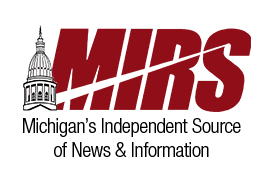(Source: MIRS.news, Published 02/12/2024) The newly renamed Appropriations Subcommittee on Labor, Economic Development and Lifelong Learning had its first budget hearing, during which Chair Will Snyder (D-Muskegon) asked more about the difference between Michigan Marketing and Pure Michigan funding.
The subcommittee was also allotted two new members to better handle Gov. Gretchen Whitmer’s Department of Lifelong Education, Advancement and Potential, or MILEAP, budget. Reps. Tyrone Carter (D-Detroit) and Tullio Liberati, JR. (D-Allen Park) were added.
Following their appointment, the committee heard a presentation from Department of Labor and Economic Opportunity Director Susan Corbin on the department’s budget, which includes $20 million from the General Fund for “Michigan Marketing Initiatives.”
Snyder, who said his Muskegon-area district has transitioned from more of a manufacturing-based economy to a tourism-based one, highlighted the importance of Pure Michigan funding in that development.
This year, Whitmer’s Pure Michigan appropriation included $15 million from the General Fund to “promote the state as a place to live, learn, build, work, play and succeed.”
A recently formed coalition of tourism groups wants closer to $50 million for the campaign and Michigan Restaurant and Lodging Association President Justin Winslow said on the MIRS Monday podcast that other states are “eating our lunch right now” when it comes to tourism spending.
But the Governor’s proposal also includes a total $20 million from the General Fund for Michigan marketing initiatives, which includes $15,000 in one-time funding and $5,000 in ongoing dollars intended to build off the “iconic Pure Michigan campaign with a focus on talent attraction, labor retention and relocating to Michigan, as well as broader population growth controls.”
Both line items reference “talent attraction and population growth marketing,” which follow the theme of population growth established by Whitmer’s Growing Michigan Together Council.
When asked for more information, Corbin talked about the Michigan Economic Development Corp. (MEDC)’s launch of a one-time talent expenditure campaign playing off of Pure Michigan, called “You Can In Michigan.”
The $20 million MEDC campaign launched nationally back in October, and the MEDC cited it as the largest state talent attraction campaign in the United States.
It includes new television commercials, radio spots, print placements, social channels, online video, paid social media, billboards at universities, and a website for job seekers to explore the state virtually and calculate their cost of living.
Just this week, two of MIRS’ correspondents under 25-years-old received the campaign’s TikTok ads titled “You Can In Michigan,” which walked viewers through young college graduates’ “five-to-nine” social activities after their nine-to-five jobs.
The campaign targets Great Lakes border states like Minnesota, Illinois, Wisconsin and Ohio, along with 12 designated market areas across the U.S., including New York, San Francisco, Washington, D.C., Atlanta, Austin and Raleigh-Durham.
The MEDC referenced $20 million budgeted for the marketing campaign over its first two years to cover production and creative development costs, but Corbin said to anticipate discussions during the budget process about how the Michigan marketing initiative dollars should be spent.
“We do know that in order for Michigan to be successful, we need to work on attracting talent to Michigan,” she said. “So, you know, working from the recommendations of the Growing Michigan Together Council report, working with our new Chief Growth Officer Hillary Doe and talking about our talent needs, I'm sure that we'll strike the right balance between dollars that need to continue going towards tourism attraction, but also using the popularity and the success of that campaign to also work on talent attraction and retention.”

